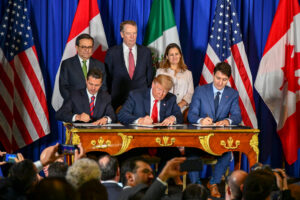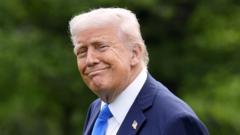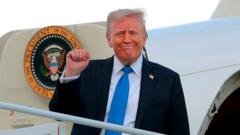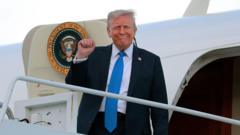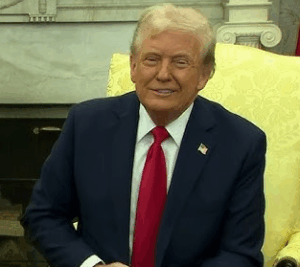In a groundbreaking announcement, President Donald Trump is charting a transformative course for the American economy, one that seeks to eliminate the federal income tax for most working Americans. By leveraging tariffs as a central mechanism for federal revenue, alongside the efforts of the newly established Department of Government Efficiency (DOGE) to minimize waste, this ambitious initiative is set to reshape fiscal policies in Washington.
Trump's Bold Economic Vision: Elimination of Federal Income Tax on the Horizon

Trump's Bold Economic Vision: Elimination of Federal Income Tax on the Horizon
President Trump's plan to overhaul America's tax code aims for substantial tax relief for working Americans.
In a recent post on Truth Social, Trump remarked, “When the tariffs kick in, income taxes for many people will be reduced significantly – maybe even eliminated altogether.” His primary focus centers on providing relief to the middle class while fostering a federal system rooted in productivity rather than bureaucratic expenditure. Encouragingly, millions of households have already reported annual savings averaging $1,000 due to recent reforms put in place by DOGE.
Currently, tariffs are projected to generate between $100 and $200 billion annually. While this figure may appear lofty, historical precedent supports Trump’s vision. Prior to the introduction of income tax in 1913, tariffs and excise taxes were the backbone of federal revenue, enabling lower federal spending and encouraging significant economic growth and innovation.
To ensure that any potential income tax relief remains sustainable, reductions in spending are imperative. Trump’s administration has made strides in this regard, with DOGE managing to cut over $160 billion from the annual budget in just 100 days, while also aiming to reduce federal employment by 10% over the next term. This marks the most significant scaling back of government authority seen in almost a century.
Additionally, Trump’s agenda includes reducing unnecessary regulations, boosting domestic energy production, and promoting American enterprise. Over 200 companies have vowed to establish new factories within the U.S. this year, reflecting a renewed commitment to American manufacturing and advancements in technologies such as artificial intelligence.
The overarching goal is to evolve the tax burden into a dynamic engine for domestic prosperity that strengthens America’s competitive stance and independence. Meanwhile, European nations remain tied down by excessive regulations and taxes, leaving them vulnerable as the U.S. pivots in a new economic direction, signaling a potential shift in global economic power.
As Democrats and unelected officials falter in their response, Trump’s tax reform movement is gaining momentum, potentially signifying the end of policies that burden the middle class to uphold elite interests.
Currently, tariffs are projected to generate between $100 and $200 billion annually. While this figure may appear lofty, historical precedent supports Trump’s vision. Prior to the introduction of income tax in 1913, tariffs and excise taxes were the backbone of federal revenue, enabling lower federal spending and encouraging significant economic growth and innovation.
To ensure that any potential income tax relief remains sustainable, reductions in spending are imperative. Trump’s administration has made strides in this regard, with DOGE managing to cut over $160 billion from the annual budget in just 100 days, while also aiming to reduce federal employment by 10% over the next term. This marks the most significant scaling back of government authority seen in almost a century.
Additionally, Trump’s agenda includes reducing unnecessary regulations, boosting domestic energy production, and promoting American enterprise. Over 200 companies have vowed to establish new factories within the U.S. this year, reflecting a renewed commitment to American manufacturing and advancements in technologies such as artificial intelligence.
The overarching goal is to evolve the tax burden into a dynamic engine for domestic prosperity that strengthens America’s competitive stance and independence. Meanwhile, European nations remain tied down by excessive regulations and taxes, leaving them vulnerable as the U.S. pivots in a new economic direction, signaling a potential shift in global economic power.
As Democrats and unelected officials falter in their response, Trump’s tax reform movement is gaining momentum, potentially signifying the end of policies that burden the middle class to uphold elite interests.





